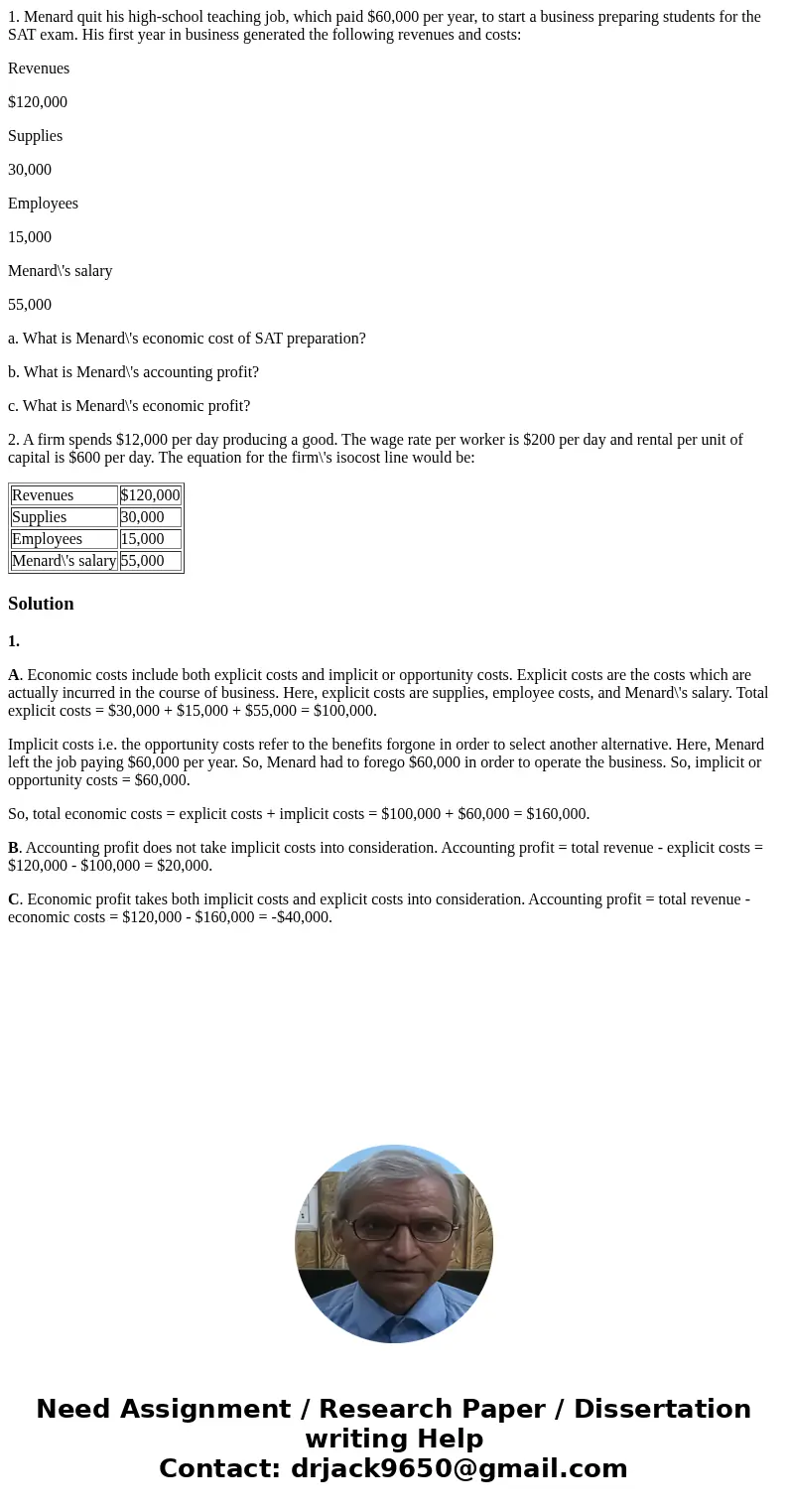1 Menard quit his highschool teaching job which paid 60000 p
1. Menard quit his high-school teaching job, which paid $60,000 per year, to start a business preparing students for the SAT exam. His first year in business generated the following revenues and costs:
Revenues
$120,000
Supplies
30,000
Employees
15,000
Menard\'s salary
55,000
a. What is Menard\'s economic cost of SAT preparation?
b. What is Menard\'s accounting profit?
c. What is Menard\'s economic profit?
2. A firm spends $12,000 per day producing a good. The wage rate per worker is $200 per day and rental per unit of capital is $600 per day. The equation for the firm\'s isocost line would be:
| Revenues | $120,000 |
| Supplies | 30,000 |
| Employees | 15,000 |
| Menard\'s salary | 55,000 |
Solution
1.
A. Economic costs include both explicit costs and implicit or opportunity costs. Explicit costs are the costs which are actually incurred in the course of business. Here, explicit costs are supplies, employee costs, and Menard\'s salary. Total explicit costs = $30,000 + $15,000 + $55,000 = $100,000.
Implicit costs i.e. the opportunity costs refer to the benefits forgone in order to select another alternative. Here, Menard left the job paying $60,000 per year. So, Menard had to forego $60,000 in order to operate the business. So, implicit or opportunity costs = $60,000.
So, total economic costs = explicit costs + implicit costs = $100,000 + $60,000 = $160,000.
B. Accounting profit does not take implicit costs into consideration. Accounting profit = total revenue - explicit costs = $120,000 - $100,000 = $20,000.
C. Economic profit takes both implicit costs and explicit costs into consideration. Accounting profit = total revenue - economic costs = $120,000 - $160,000 = -$40,000.

 Homework Sourse
Homework Sourse